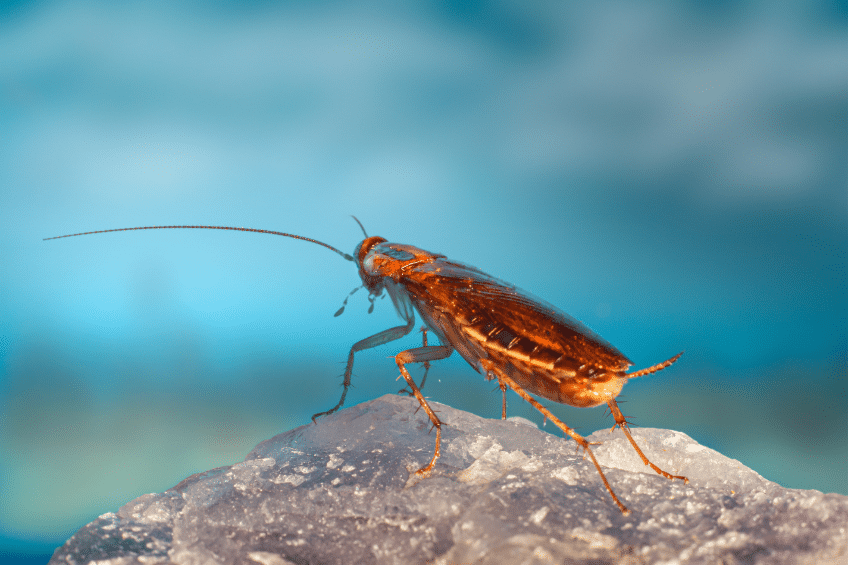By Sean Zucker —
There has been a long tradition of heralding humanity’s impending doom because of artificial intelligence. Think Terminator, Blade Runner or some of Isaac Asimov’s works. People often fear more immediate and tangible things, like cockroaches or credit card debt. Well, one team of scientists is relying on producing something positive by combining these psychological terrors—sans the credit card debt. That’s not going anywhere. What’s more, they’re hoping to use it to combat hazardous outcomes from the biggest real-life threat to humankind—climate change.
A team of international researchers at the RIKEN Cluster for Pioneering Research (CPR) in Japan have created cyborg cockroaches controlled by solar-powered backpacks in hopes they can monitor the environment.
Admittedly, the researchers haven’t developed fully sentient androids. Instead, their efforts have yielded something closer to insect-robot hybrids, with actual cockroaches controlled remotely by those tiny sun-charged backpacks. They accomplished this by tapping into the roach’s nervous system and allowing the operator to direct their movements with wireless buttons, explained Kenjiro Fukuda, the RIKEN program leader.
These robot critters aim to carry out search and rescue missions in the aftermath of weather-related disasters, such as earthquakes or tornados, which have increasingly appeared in line with rising global temperatures. The World Meteorological Organization, a specialized agency of the United Nations responsible for promoting international cooperation on atmospheric science, climatology, hydrology and geophysics, recently reported that such occurrences increased five-fold between 1970 and 2020. The agency added that these natural hazards also accounted for 50 percent of all disasters, 45 percent of all reported deaths, and 74 percent of all reported economic losses.
These cockroach-sized devices can crawl into tight spaces to look for survivors amidst rubble. The team believes these roach rescuers are more efficient than the similar miniature robot devices now used in disaster situations.
“The body-mounted ultrathin organic solar cell module achieves a power output of 17.2 mW, which is more than 50 times larger than the power output of current state-of-the-art energy harvesting devices on living insects,” says Fukuda.
Beyond being significantly more powerful, their use of solar power gives these devices the ability to run longer and more expansive searches than battery-powered alternatives.
Nonetheless, Fukuda and his team aren’t satisfied with their efforts. They want to use this technology on other, similar invasive species.
“Considering the deformation of the thorax and abdomen during basic locomotion, a hybrid electronic system of rigid and flexible elements in the thorax and ultrasoft devices in the abdomen appears to be an effective design for cyborg cockroaches,” Fukuda explained. “Moreover, since abdominal deformation is not unique to cockroaches, our strategy can be adapted to other insects like beetles or perhaps even flying insects like cicadas in the future.”
All this good work might just put the much-maligned cockroach in a new light. It may also add to some people’s concerns that these little bugs are spying on them, albeit with good reason.












